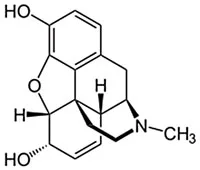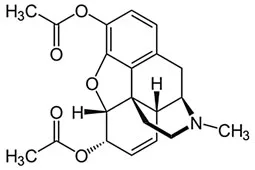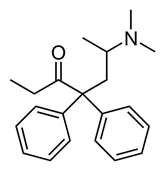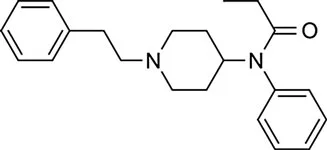ADDICTION SCIENCE
One of the most publicized topics in the news today is that of opioid overdose death, especially as it concerns the opioid fentanyl. What is fentanyl and how is this drug so dangerous? This article looks at the scientific background of fentanyl danger.
Morphine
Opioid drugs date back to the opium poppy, a plant known to be used by humans as early as 5000 B.C. This plant would be ingested or smoked for pain relief or other ceremonies. The core molecule of opium is morphine and is the precursor to many of today’s opioids. Up until the early 1900s, opium was used naturally without significant modifications. This changed with the development of other opioids through modification.
Morphine
Heroin
Morphine is the natural source compound for heroin, as this involves chemical adjustment methods being applied, creating a new and more dangerous and addictive drug. Initially designed to improve on morphine for pain relief, heroin became one of the most addictive drugs known to man. When taken, heroin crosses into the brain faster than morphine, giving it such addictive qualities. As shown below, the initial morphine molecule is still present with heroin, augmented by two additional chemical groups.
Heroin
Methadone
Any drugs that connect back to morphine are considered natural opioids, and this is distinct from what we call synthetic or semi-synthetic opioids. Synthetic means that the drugs were developed primarily in a lab using other source compounds. The first fully synthetic opioid was methadone, developed in the late 1930s by the Nazi regime of Germany. At that time, the Allied nations created a trade embargo, blocking out Germany from access to natural opium. Methadone was their own development to be used for pain relief amongst their soldiers.
Methadone
Fentanyl
Another example of a synthetic opioid includes fentanyl, developed in 1960. Fentanyl is commonly used in multiple areas of healthcare, including chronic pain management and in most surgical operations with the guidance of an anesthesiologist. It is often delivered in a liquid intravenous form and has a quick onset of action. For chronic pain, it is sometimes administered in the form of a fentanyl patch which is worn on the body for most of the day.
Fentanyl
All opioids are compared to morphine in terms of potency. For instance, methadone is about 3 times stronger than morphine, heroin is about 5 times stronger, and fentanyl is 100 times stronger. This dramatic difference in potency contributes to the overdose potential of these different drugs. Despite fentanyl being so much stronger than heroin, it is paradoxically much cheaper.
The issues of cost and profit explain why some heroin distribution is a combination of heroin and fentanyl rather than pure heroin alone. This also explains the fentanyl danger associated with overdose rates that are so because high with users aren’t expecting the degree of potency that they receive.
Fentanyl Danger
Opioid addiction often involves tolerance in the brain from opioid use. Even with opioid tolerance, the brain and respiratory center can only handle so much power. Fentanyl attaches to the brain as such a force that an overdose is likely to occur. Also as discussed above, the speed of the effect is so profound that a user may not be able to recover in time from the overdose.
Understanding some of the differences between opioids as a medical community helps us grasp the scope of the opioid epidemic. Most opioid overdose deaths are unintentional and tragic. The risk attached to heroin use, therefore, is partly due to the unknown ingredients in any heroin supply. The contrast in the body receiving heroin as compared to fentanyl is too great for the person to survive.
If you or a family member are struggling with opioid addiction, time is of utmost importance. The longer the addiction continues to live, the greater the probability of encountering fentanyl, often accidentally. This can lead to an overdose and no future potential to heal. Our pathways to help a person recover from opioid addiction are quite strong, evidence-based, and safe. By acknowledging fentanyl danger and engaging someone in this process through CeDAR, recovery becomes life-saving.




